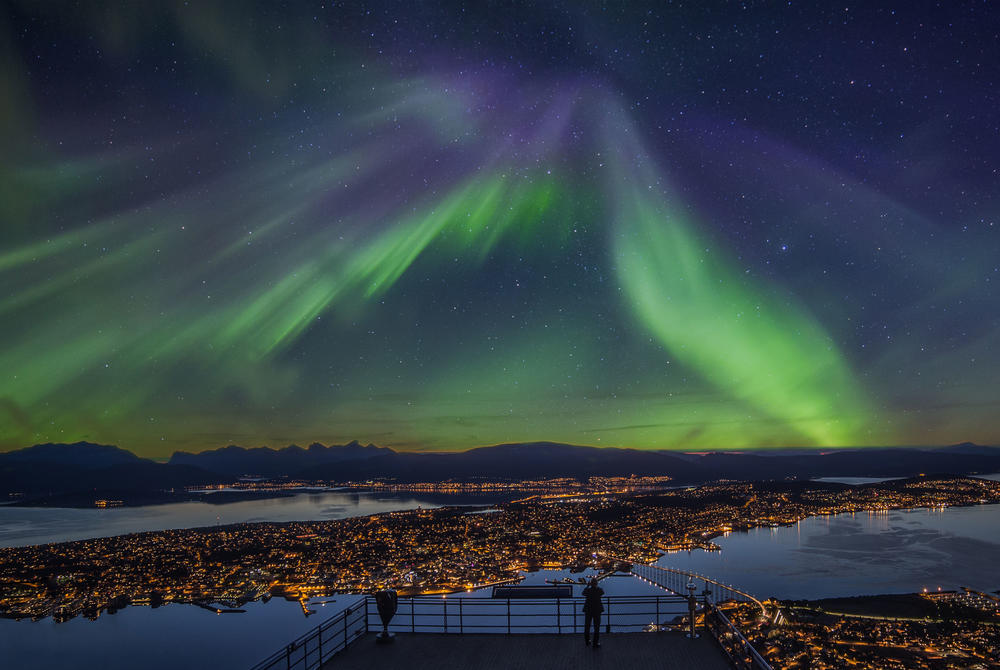Way Up in The Arctic, This Young Indian Scientist Is Studying the Future of The Planet
Hailing from a small village in West Bengal, Ankit Pramanik has spent the last few years researching the impact of climate change in the Arctic Circle.

Imagine a desolate wilderness beset by stormy waves, freezing hurricane-force winds, half-inch thick walls of ice and long seasons of darkness. Now, imagine a strikingly beautiful snow-scape where pristine vistas and exotic wildlife can be found in abundance. An ever-shifting, ever-changing place that has sustained pioneering people for millenniums.
All these descriptions can be applied to the Arctic — one of the most enigmatic and surreal regions on Earth.

Intensely beautiful, numbingly cold and extremely challenging, the Arctic has exercised a magnetic pull on the human imagination for eons. More importantly, it also acts as the proverbial ‘canary in the coal mine’ for global warming — the ecologically-fragile frigid zone is warming twice as rapidly as any other region on Earth, something which cannot but have a huge impact on both India and the world.
This is why, way up in Northern Norway, a young Indian scientist has been studying the ecological and geological changes taking place in the Arctic.
Funded by the Indian Ministry of Earth Sciences (in collaboration with the Norwegian government), Ankit Pramanik moved to Tromsø a few years ago to complete his PhD at the Norwegian Polar Institute.

Born and brought up in West Bengal, Ankit grew up in the village of Ganrapota. After completing his Bachelors in Physics from Calcutta University, he joined IIT Madras to pursue his Masters in the same subject.
It was during his final year here that Ankit came across an advertisement on the website of National Centre for Antarctic and Ocean Research (NCAOR) that mentioned a collaborative programme on glacier research between India and Norway.

Having always been interested in geophysics and cryosphere research, Ankit applied immediately. Called for an interview, he was lucky enough to be accepted for the programme which would give him the opportunity to pursue his PhD in the field of glaciology at Norwegian Polar Institute.
After moving to Tromsø, Ankit underwent field-specific safety and rescue training. He then began going on field expeditions to study the fragile glaciers in Svalbard, more specifically in the Kongsfjord area.

Ankit’s work involved investigating how glaciers interacted with varying energy fluxes and how their melting changes the local ecosystem i.e the ecological impact of glacial freshwater of mixing with the salty water of the surrounding seas.
This information was then used in the creation of an energy balance model that would help scientists and oceanographers understand how much glacial melt is produced in a particular time interval and how much water is added to the fjord through different channels.

What makes Ankit’s work extremely significant is the fact that not only is the freshwater-saltwater glacial front a great indicator of changing climate, it also plays a crucial role in ocean circulation. Therefore, by investigating the melting glaciers of Arctic, valuable information about climate change and its impact can be obtained.
“Climate change is a thing that has direct impact on all of us whether it is polar region or tropics and we need to understand its past, present and future. And discovering the many unknowns about glaciers can play a very important role in doing this”, says the young scientist.

Also, apart from sea level rise, studying glaciers and their geological characteristics can help understand climate evolution in the past. According to Ankit, this study can be applied to glacier research in the Himalayas as well. This is because, though the climate in Arctic and climate in Himalayas is very different, the basic physics of glaciers remains the same.
So, scientific modelling and field work research on Arctic glaciers can help provide a better understanding of Himalayan glaciers — the source of many major rivers on which billions of Indians depend for their lives and livelihoods. This study can also play a key role in planning hydropower projects and predicting floods caused by glacier lake outbursts.

On a more personal, Ankit cherishes the memorable experience of his days at Tromsø.
“Surrounded by breathtaking hills, fjord and ocean, Tromsø is a beautiful city. Furthermore, because it is above the Arctic Circle, Tromsø experiences two months of complete daylight and two months of complete darkness. It also a place where can one see the Northern Lights (aurora borealis), a natural phenomenon in which the night sky lights up in unearthly, surreal colours.
I have seen the Northern Lights uncountable times and these experiences are very precious to me. As for my day, my favourite part are the evenings, the time after work when I go for skiing in winter and hiking or cycling in summer. Skiing and ice skating are two things that I have learnt after moving to Norway and I enjoy these activities immensely!”, says Ankit, adding that the things he misses most are his family and homemade Indian food.

Asked where he sees himself in the near future, Ankit says that he loves his works and would like to continue doing research on glaciers.
“In the coming years, more and more people will be needed to do more research if we are to address the growing concerns about climate change and learn about its impact on the future of the planet.
So I would like to expand my area of research. For instance, if the opportunity arises, work on Himalayan glaciers and contribute to Indian research projects. I would also like to do my bit in making people aware of the impact of changing climate as well as the human activities that are leading to it.
In short, I would like to see myself as an established researcher who contributes to the society through his research and outreach”, he signs off.
Also Read: This Indian Scientist is Working in a $100m Project, Searching for Aliens!
Like this story? Or have something to share? Write to us: [email protected], or connect with us on Facebook and Twitter.
NEW: Click here to get positive news on WhatsApp!

Similar Story

Want to Play a Role in Shaping India’s Climate Laws & Policies? Here’s a One-Stop Guide
Civis, a platform that enables citizens to participate in public consultations in the domain of environment and policy has released Climate Voices. This is a handbook and guide for Indians to participate in environmental law-making and play an active role in shaping our climate policies.
Read more >
If you found our stories insightful, informative, or even just enjoyable, we invite you to consider making a voluntary payment to support the work we do at The Better India. Your contribution helps us continue producing quality content that educates, inspires, and drives positive change.
Choose one of the payment options below for your contribution-
By paying for the stories you value, you directly contribute to sustaining our efforts focused on making a difference in the world. Together, let's ensure that impactful stories continue to be told and shared, enriching lives and communities alike.
Thank you for your support. Here are some frequently asked questions you might find helpful to know why you are contributing?


This story made me
-
97
-
121
-
89
-
167












